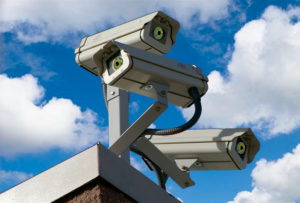If you think Big Brother is only watching people in London and New York, you are seriously mistaken. Like the Bobby Vee hit record from 1968, The Night Has A Thousand Eyes.
This past week I attended the murder trial of Christina Daughenbaugh. Aside from the other minimal evidence, the accused, Curtis Echols, was caught on camera many times, from many angles, in many different locations; from humble Lansing, Michigan to Detroit to South Bend, Indiana. Law enforcement also tracked his cell phone. Even when some cameras were compromised by rain* the accused was identified by body type and gait.

<Click—WhIRR> Gotcha!
Why am I telling you this? Because I wrote a science fiction novel entitled N-hanced , where the main character has to break a number of laws in order to stay off the grid—which consists of trillions of mosquito-size (skeet) cameras and microscopic human-ingested computers—so that he can prove himself innocent of a crime. The story takes place in 2035—only seventeen years in the future. We may not have skeet cams everywhere just yet, but much of the groundwork is already in place and being used daily to protect us and enhance our lives. And with only a slight shift in the attitude of a government, these technologies can be used to silence citizens who disagree with official policies.
An hour before Echols killed Christina in his motel room, he walked to a nearby supermarket and bought the knife he used. The walk and the purchase were also caught on video, thereby proving premeditation. The jury took slightly more than an hour to convict him. If not for the camera evidence, he might have been freed.
The future is already here, and you are being watched. Right here. Right now. What are you doing at this every moment? A little advice? Keep your nose clean. No shoplifting, no joy riding, and absolutely no murdering—unless you have Harry Potter’s cloak of invisibility.
For more on surveillance, see the terrific article, “They Are Watching You,” in the February 2018 issue of National Geographic.
* some switch to black and white mode, and parts of the images are blurred.